JPEG Decompression Simplified: Restore Image Quality Like A Pro
JPEG is a widely known format used for files, mostly images, which stands for Joint Photographic Experts Group. However, it becomes difficult for people to store a huge number of image files with their original size. Therefore, they are compressing images to reduce their sizes for easily store and transfer across networks and devices.
Mostly, the quality is not destroyed while compressing the file, but comparatively, decompressing is challenging because maintaining the quality here becomes difficult. Note that the JPEG decompression is done by reversing the steps of compression. Anyhow, this article will help you understand decompression and introduce many JPEG decompressors that help minimize common issues and fix JPEG compression artifacts.
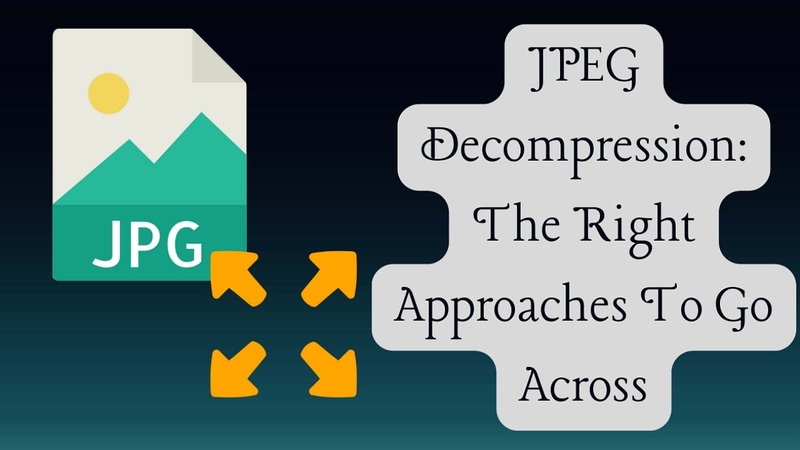
Part 1. Figuring Out The Operations Of Compression
When the compressed data is very similar to the original data, but it is not the same, it is called lossy compression. Usually, lossy compression algorithms dispose of the relatively less important data that is not noticeable to the human eye. These unnoticeable parts do not cause any apparent degradation in the final product, but when users restore compressed JPEG files, they witness quality loss.
At the expense of a slight reduction in the quality of the image, it makes room for other significantly large files. No matter if there are a lot more advantages to JPEG compression, the discarded data gets permanently deleted and becomes unrecoverable after decompression. That's why this compression method is also widely known as irreversible compression.
Part 2. Common Issues With Compressed JPEGs
Undoubtedly, JPEG compression is the best way to save storage, but it comes with certain issues, especially when you decompress JPEG images. Some of these issues are faced by users on a daily basis and are explored below:
1. Blurriness: When an image is compressed, sometimes it starts showing some distortions that were not present in the original image. These distortions or pixelations are called compression artifacts and commonly appear between colors, disrupting the smoothness.
2. Color Banding: Compressing files may involve rounding of color of pixels to the closer ones, which sometimes causes minute posterization. This prominent difference from one color to another is color banding, which is considered one of the ugliest artifacts.
3. Loss of Sharpness and Detail: There is high-frequency and low-frequency information in a digital image, where the high-frequency information is responsible for fine details and sharpness. As the JPEG compression permanently deletes the data, it often gets rid of this high-frequency information, resulting in loss of sharp edges.
Part 3. 5 Top Methods To Decompress JPEG Images
There are many JPEG decompressors available nowadays that help people with compression or decompression, and some of the leading ones are discussed next:
1. Adobe Photoshop
Adobe Photoshop is one of the trending platforms that offers a Reduce Noise Filter to remove artifacts. Apparently, enhancing overly compressed files is a difficult task, but it can be easily done through this software’s Camera Raw Filter. It sharpens texture by enhancing details, reduces noise, and restores colors and contrast.

Key Features
1. When the images are not smooth and texture is lost, the High Pass Filter helps save details.
2. To soften the edges and details, Gaussian Blur can be used at a low radius.
3. The AI-based Preserve Details 2.0 feature upscales the images at a minimum quality loss.
Limitations- This program takes up a lot of space in the computer's hard drive.
- Its complex interface is daunting for a lot of users, especially beginners.
2. Topaz Gigapixel AI
If you are looking for the best JPEG decompressor to restore image quality, Topaz Gigapixel AI is the one for you. It uses the advanced AI Upscaling Engine to improve the resolution of images 10 times better. You can even use its special nature and landscape filter to enhance the quality of your scenery images.
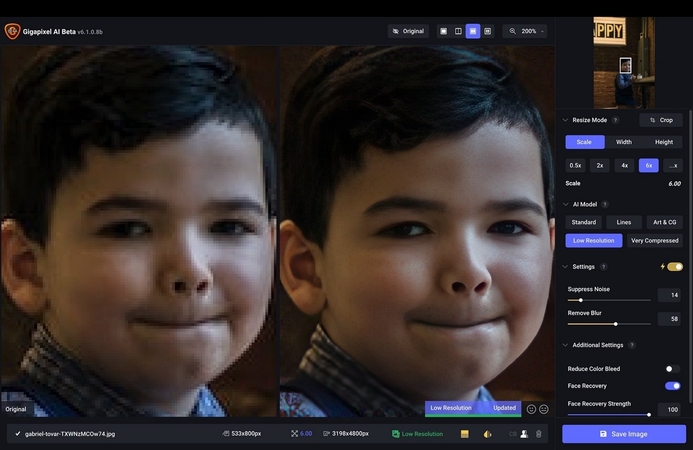
Key Features
1. Its batch-processing feature allows you to import and upscale multiple pictures.
2. Smart Detail Enhancer enables users to rebuild textures and fine details.
3. Face Recovery AI specializes in enhancing portraits and even group pictures.
Limitations- Topaz Gigapixel AI does not support all kinds of image formats.
- It processes slowly to fix JPEG compression artifacts, making it time-consuming.
3. GIMP
GIMP is an open-source website for image editing and enhancement that is compatible with all operating systems, including Linux/GNU, macOS, Windows, etc. It supports a vast range of image formats such as JPG, JPEG, PNG, and many others, making it easier for users to import and export files.

Key Features
1. The Selection Tools feature allows you to select a specific part of an image to work on.
2. GIMP's photo enhancement feature fixes the distortion and quality of images.
3. Its corrective mode helps correct the alignment of pixels and colors in distorted areas.
Limitations- There is no technical support team to interact with users in case of emergencies.
- GIMP is rarely updated, which makes it susceptible to bugs and errors.
4. Krita
A free professional program that was mainly designed for painting but is now used for image enhancement is Krita. With its Group Layer feature, you can work on multiple layers, making the enhancement process more efficient. This JPEG decompressor offers almost 30 dockers, so you can run multiple functions at the same time.

Key Features
1. The Sharpen tool allows individuals to sharpen the fine details of their images.
2. The Mean Removal feature can remove blur artifacts and color banding.
3. It offers the Unsharp Mask feature that eliminates overly sharpened details.
Limitations- It does not allow batch processing, leaving users to waste time on repetitive tasks.
- Krita does not contain any sophisticated algorithms, which is why you need to enhance results in a loss of quality.
5. HitPaw FotorPea
To convert low-quality JPEG to high resolution, you should try HitPaw FotorPea that is specially designed to improve the quality of your images. This tool enhances your image up to 16K resolution from low resolution, with minimum loss of original data. It does not only fix your high-resolution pictures, but it can also upscale your low-resolution pictures, making it suitable for decompressed landscapes, portraits, and wildlife photographs.

The user-friendly interface is one of the main reasons for popularity not only among professionals, but beginners can also easily use it to achieve high quality results. Supporting all image formats like PNG, JPEG, etc., HitPaw FotorPea attracts a huge number of users. Over and above that, it is available for both Windows and Mac.
Key Features1. Photo Categories: This software lets the user choose from a wide range of options given for picture type. To clarify, if you are to enhance a group photo, select the "Group Portrait" option.
2. AI Models: HitPaw FotorPea offers 9 AI Models to help editors enhance their compressed files. Moreover, its Color Calibration and Upscale Models specifically help in correcting artifacts and improving quality.
3. High-Res Acceleration: Through this feature in the settings, you can increase the pace of processing of high-resolution pictures. Additionally, it consumes the lowest possible time and power while maintaining quality.
Part 4. Guide To Perform JPEG Decompression Using HitPaw FotorPea's Newest AI Models
The complex task of decompressing a compressed JPEG file can distort your image but it can easily be enhanced with AI powered software like HitPaw FotorPea. Here is a complete guide for how to decompress a JPEG file without losing quality:
Step 1. Download The Tool For Decompressing Images
Install the tool HitPaw FotorPea and select the “Enhance Photos Now” option.
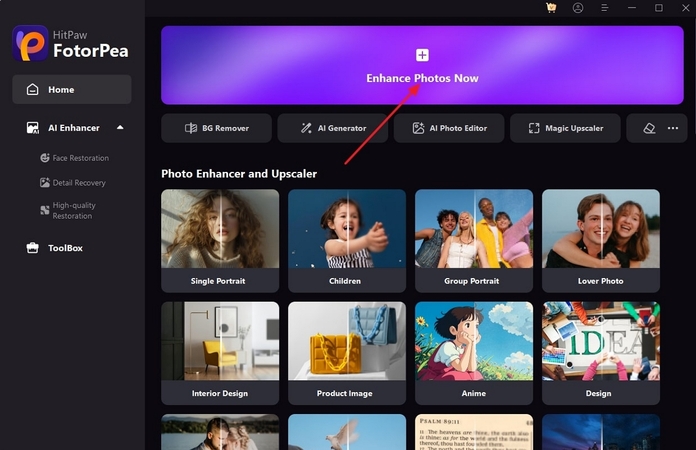
Step 2. Fetch The Desired Image And Start Enhancing
Press the "+" symbol in the middle of the screen to upload the targeted image. Afterward, from the right side of the page, there is the "AI Model" section, from where you can activate the “Compression Artifact” model and hit "Preview" on the bottom.
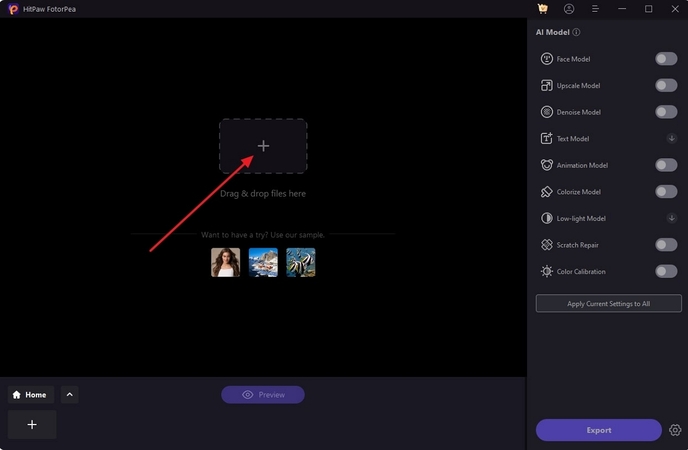
Step 3. Export Your Final Product from FotorPea
Eventually, you will have the result on the screen that you can download by clicking the “Export” button.

Conclusion
To conclude, compression is the best approach to saving JPEG image format files without consuming much space but decompressing it can be troublesome. This article has addressed those troubles in detail, along with the best 5 JPEG decompressors for preventing the issues. One of those tools is HitPaw FotorPea, which is one of the leading AI-powered software to enhance the quality of your JPEG files.





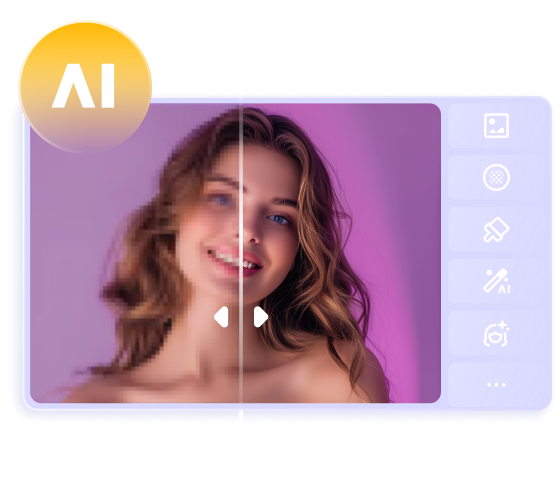
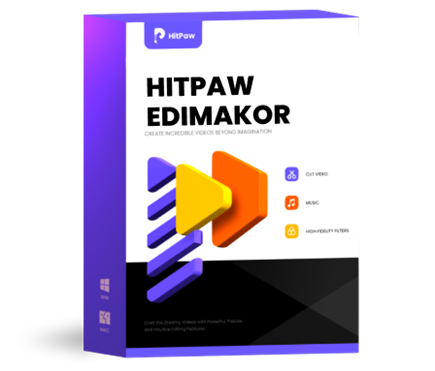 HitPaw Edimakor
HitPaw Edimakor HitPaw VikPea (Video Enhancer)
HitPaw VikPea (Video Enhancer) HitPaw Univd (Video Converter)
HitPaw Univd (Video Converter) 
Share this article:
Select the product rating:
Daniel Walker
Editor-in-Chief
My passion lies in bridging the gap between cutting-edge technology and everyday creativity. With years of hands-on experience, I create content that not only informs but inspires our audience to embrace digital tools confidently.
View all ArticlesLeave a Comment
Create your review for HitPaw articles